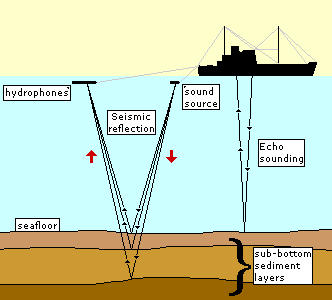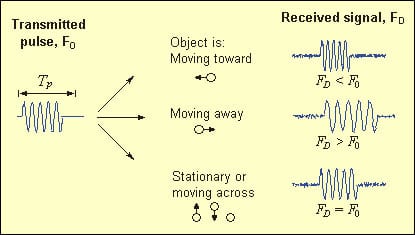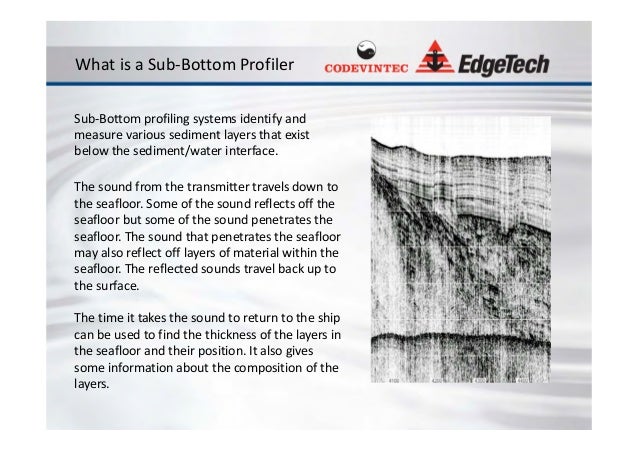Profiling Used Sound Reflected At The Sea Floor
Uses the behavior of sound reflected at sea floor to study the different layers of ocean sediments.
Profiling used sound reflected at the sea floor. In high resolution seismic reflection profiling a towed sound source transmits acoustic pulses that are reflected off the sea floor and the layers beneath. There are several underlayment types available. Gas hydrates found on the sea floor contain a tremendous amount of which is natural gas that can be used as an energy resource. Measured the time for a sound pulse to make a round trip from a ship to the ocean floor.
Towed hydrophones shown at left or hydrophones built into the sound source receive the returned signal. For freshwater sub bottom profiling a ground penetrating radar system can also be used. Multi channel seismic profiling penetrates several kilometers into the seafloor and the reflected or refracted sound gives pictures of various layers as the speed and direction of the sound waves are altered by the density elasticity and flow properties of the material they pass through. Two types of technology share the name sonar.
The depth of penetration can be limited by the grain size of the sediment and porosity of the rock. While faster and more accurate than traditional methods echosounding only measures a single location directly under the ship and is inefficient for mapping large areas of the ocean floor. Seismic reflection and seismic refraction used to study the layers below the sea floor also produce an ocean sea floor map. Active sonar is emitting pulses of sounds.
Particles that are all the same size. Some of the acoustic signal will penetrate the seabed and be reflected when it encounters a boundary between two layers that have different acoustic impedance. What the three tests that calcareous are primarily composed of. A sound source emits an acoustic signal vertically downwards into the water and a receiver monitors the return signal that has been reflected off the sea floor.
The sea floor mapping group sfmg is a core capability at the woods hole coastal marine science center whcmsc that provides support for coastal lacustrine and marine geologic research. Profiling uses the behavior of sound reflected at the sea floor to study the different layers of ocean sediments. The staff has a wide range of expertise and is responsible for geophysical and sampling data acquisition processing interpretation and publication logistics design and research and development. Foam is the most common and the least expensive option.
Passive sonar is essentially listening for the sound made by vessels. A sediment sample that is well sorted has. Since foam has limited sound dampening capabilities it s best used on the ground floor of your home.

















